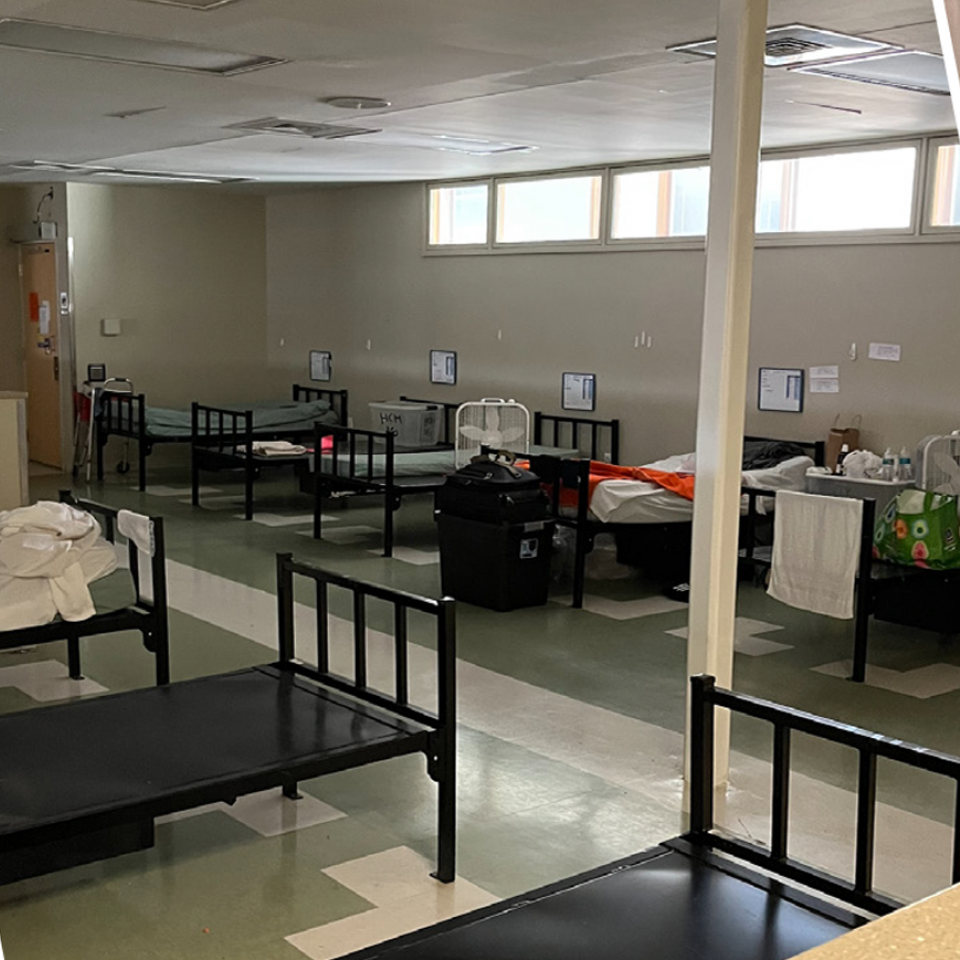Have you ever felt like throwing up your hands in frustration? Sometimes it can feel like “nothing” is working or “everything” is against you. Each of us has strengths. Even if the odds are truly against us, there are actions we can take.
The Mayor’s Office of Homeless Services has declared a winter shelter warning for Thursday, January 2, 2025 at 4 pm until Tuesday, January 7, 2025, at 9 am. Call 211 (available 24/7) or 443-984-9540 to connect with shelter. Get more info here.



10.25.22

Nurse Manager Ryan Frederick, RN, cares for clients at our Convalescent Care Program.
Shelters are not adequate places to recover from surgery or illness. One of the only options available to people experiencing homelessness in Baltimore is our Convalescent Care Program (CCP), a small team that cares for clients discharged from hospitals—and who otherwise have no place to recover.
“I held out to come here,” said Thomas Paige. “I knew that this was a good resource.”
Thomas is healing from a badly infected wound and spent a month in a Baltimore hospital waiting for a space at CCP to open up. Though he may need further surgery, he’s focused on improving his mobility so he can get back to work as a truck driver, his profession for 29 years.
Under normal circumstances, CCP operates as a 16-bed dormitory-style facility above the city’s emergency shelter. But after COVID required that the entire operation move into a hotel, staff and clients got a glimpse of how the program works in a different setting.
“It was intense sometimes,” said Dominae Lynn, who joined CCP as a Therapist Case Manager in the height of the pandemic. “We’ve moved to four different hotels since I’ve been here.”
“Clients kind of enjoyed it,” added Ryan Frederick, Nurse Manager. “They had their own rooms and showers and more privacy.”
Thomas only spent one night in a hotel before the program was cleared to return to the shelter. For him, the group-living setup of CCP, with on-site medical support and social services, works well. Thomas appreciates the on-site care as he deals with limited mobility. While at CCP, Thomas got his Social Security card and is working with Dominae to get his birth certificate.
“I like to take care of myself,” he says. “But with the little bit of help I’m getting, it makes a major difference.”
For clients who simply need a safe place to rest, the pandemic showed us that hotel rooms may be an alternative model. “A lot of needs are solved by being in a hotel—clients are free to come and go as they want, they have the space to store medications, bathe regularly, plug in machines,” explains Dr. Tyler Gray, Senior Medical Director of Community Sites.
“I think it’s in clients’ best interests to think about these things. If clients are in a hotel, what does our support look like? How do we provide that?”
Medical respite programs started, in part, as a response to homeless shelter rules. “Clients were told at 7 am that they need to get up and leave,” said Tyler. “For someone with a broken leg, or someone who needs to be off their feet after surgery, that’s just not possible.”
The shelter system is at capacity, and the need for space to recover is not going away. In fact, we reject the vast majority of referrals because we don’t have beds available.
“If we can dream a little bit, there are creative solutions out there,” Tyler explained. Across the country, communities and service organizations are trying out different models of care– whether that’s dormitory-style living, group or transitional housing, or taking up residency in a block of motel rooms.
“We can’t do it by ourselves. We need to work with hospital partners, city partners– lots of different agencies, all working together,” said Tyler. “I’m cautiously optimistic that we can create medical respite care that meets clients where they are.”
Meanwhile, Thomas is taking recovery day by day. “I’m glad that I got the will and the motivation—I just need to stay focused on getting myself well.”
For more on medical respite care models, visit the National Institute for Medical Respite Care at www.nimrc.org.

More Recent News
Send one email today to advocate for housing that serves all Marylanders. Let Governor Moore know that more permanent supportive housing is a good thing—and urge him to stay the course.
At our annual staff holiday party, we take time to honor and celebrate staff members who best represent our Core Values and one HCH-er at Heart.
Larrice is a mother, grandmother, teacher, cook and storyteller who was recently featured in our original documentary, “Taking Care: Portraits from Baltimore.”


